Featuring photographs from my ‘Back in the Day’ visit to Syria
In the autumn of 2005, six years before the start of the civil war, I spent ten days travelling around Syria. The cities I visited and the architectural wonders that I saw blew my mind and to this day, the visit remains one of the most memorable trips I have ever done.
As some of you know, before becoming full-time travellers, both Kirsty and I worked in the travel industry and I visited the Syrian Arab Republic (to use its official name), along with Lebanon as part of my job.
Even back then Syria was an on-and-off destination from a tourism point of view. Skirmishes with Israel in the south of the country around the Golan Heights, the heavy-handedness of the Syrian regime (under the control of President Bashar al-Assad), and reports of human rights abuses as well as in-country terrorist attacks from Islamist militant groups were some of the reasons why the foreign travel advice of the British Foreign and Commonwealth Office (FCO) changed its mind on a regular basis as to whether Syria was a safe destination for British tourists or not (*).
(*) Other countries have their own travel advisory departments, but, as a UK travel company, we were bound by and adhered to the advice provided by the FCO as the majority of our clients were British nationals.
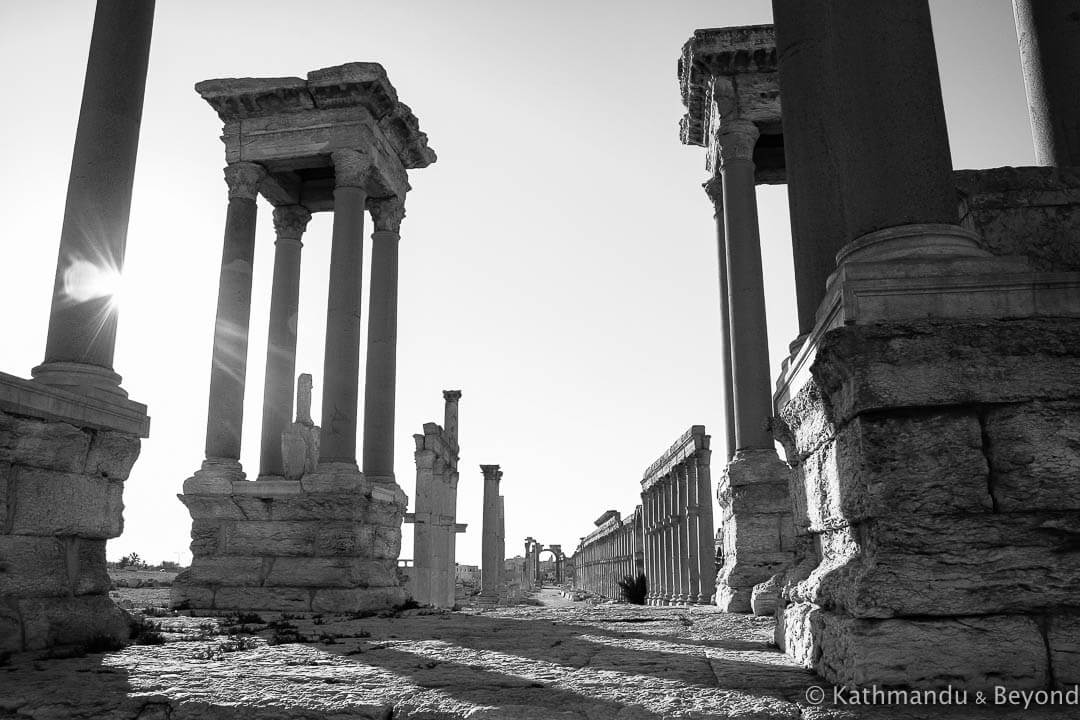 Palmyra
Palmyra
It was frustrating for us as a travel company because when Syria was OK to sell, it sold like hotcakes. As well as a stand-alone Syria tour, we would also combine it with neighbouring Jordan (Petra, Jerash and the desert castles) and mighty Baalbek in Lebanon in order to create and offer an incredibly rich historical and archaeological itinerary that would easily rival, if not surpass, the marvels of nearby ancient Egypt.
When I was planning my visit in 2005, Syria had been off-limits for about two years and had only recently become a safe destination again by FCO standards. Because of the gap in time, the purpose of my journey was to check the standard of the hotels we used for our clients, have meetings with our suppliers on the ground, and generally report back to my directors as to whether Syria was definitely back on the cards or not.
I was extremely excited about the trip!
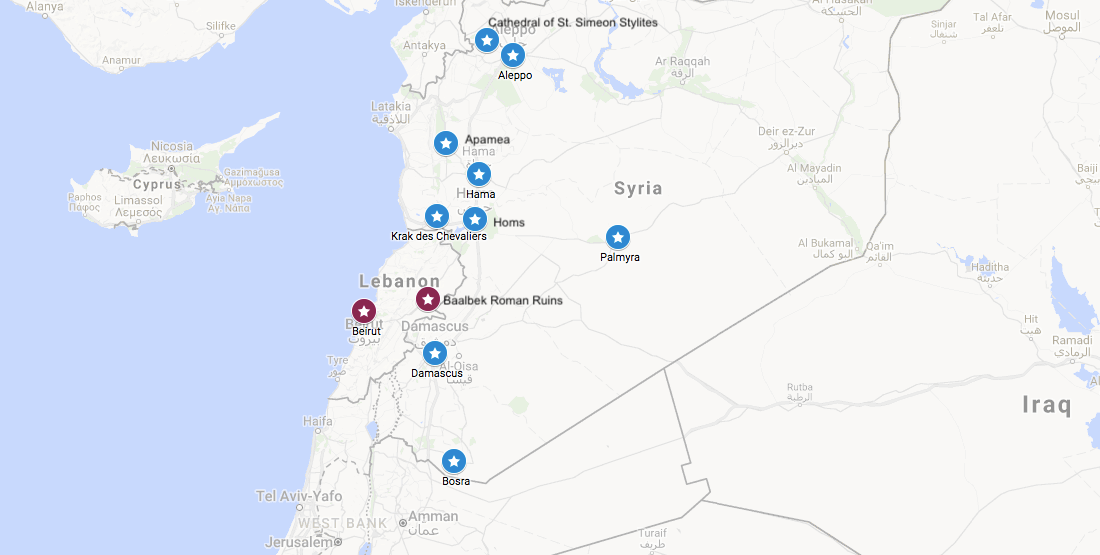
My two-week itinerary started in Lebanon, where I spent time in Beirut and ventured further afield to ancient cities such as Tripoli (the Lebanese city, not Libyan), Sidon, and Tyre (some of which are now on the FCO’s all but essential travel list). I then headed via the Beqaa Valley to the Syrian border, stopping off to visit the stupendous Roman city of Baalbek along the way.
The city of the same name and parts of the Beqaa Valley has long been a stronghold of the Shi’a Islamist political and militant group, the Hezbollah, and I remember seeing lots of huge billboard propaganda posters of Hezbollah leaders and martyrs who died for their cause all along the highway as I drove towards the Syrian border. It put me a little on edge but I had no issues crossing the border and also keep in mind, I was on official company business and so was escorted everywhere in a private vehicle, plus I was always accompanied by a personal guide. At the border, I said goodbye to my Lebanese guide and driver and was warmly greeted by a young Syrian man, who was to be my driver/guide for the next ten days while I toured the country.
I began my journey in Syria by heading north to the city of Homs, where I spent the night and got invited to a wedding reception at the hotel I was staying at (*). The next morning, slightly hungover, I headed off with my guide to the nearby crusader castle of Krak des Chevaliers, a hulk of a structure close to the border with Lebanon that has seen numerous attacks over the centuries, including this one when it was shelled during the Syrian Civil War.
(*) Contrary to common misconception, Syria is not a dry country.
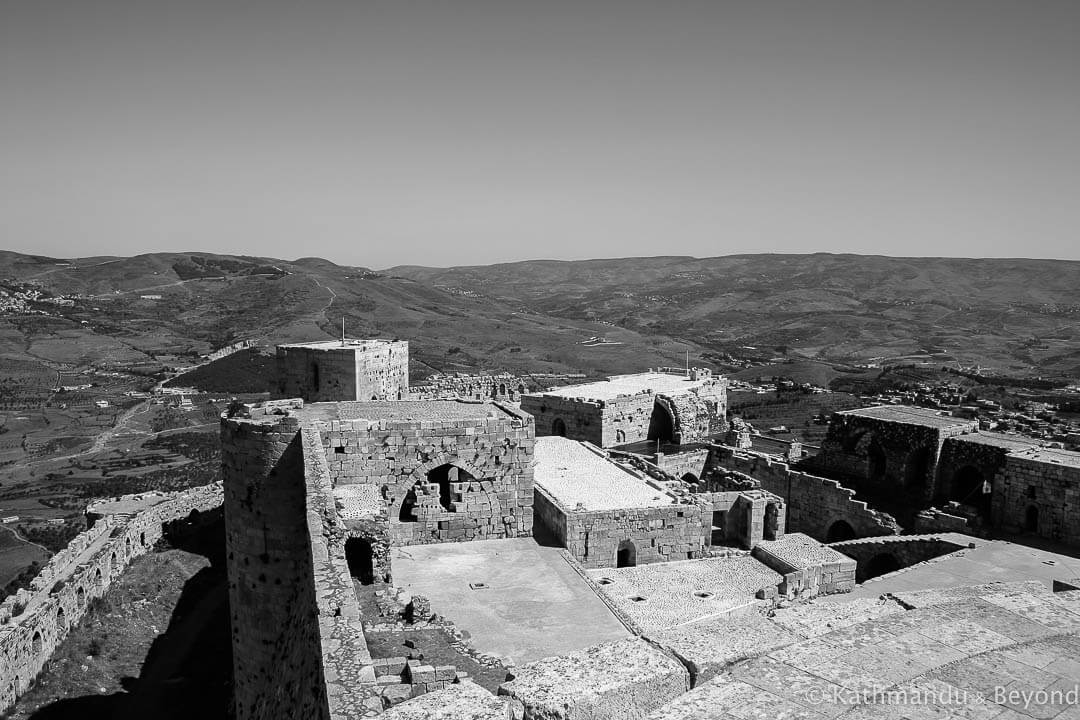
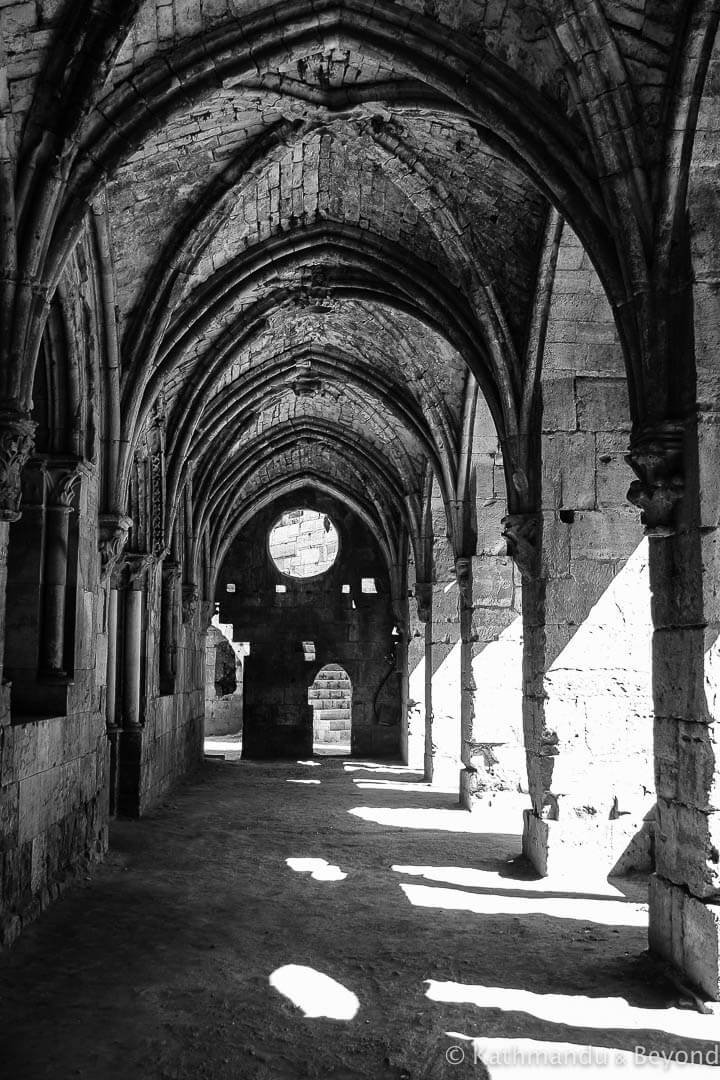
Krak des Chevaliers
As an aside, I can’t for the life of me remember the name of my Syrian guide but he was about my age and a fun guy to be around. We once pulled up at traffic lights in Damascus and while waiting for them to turn green my attention was drawn to a female driver in the car adjacent to ours. Damascus was towards the end of my time in Syria and my thoughts were concentrated on the fact that she was the first female driver I had spotted. She was wearing a niqab and my guide looked at me and said in a low tone, “We call them ninjas.” You probably had to be there, but it was the way he said it and we only stopped our raucous laughter when it was rudely punctuated by the sound of a zillion car horns behind us as we hadn’t noticed the lights had turned green!
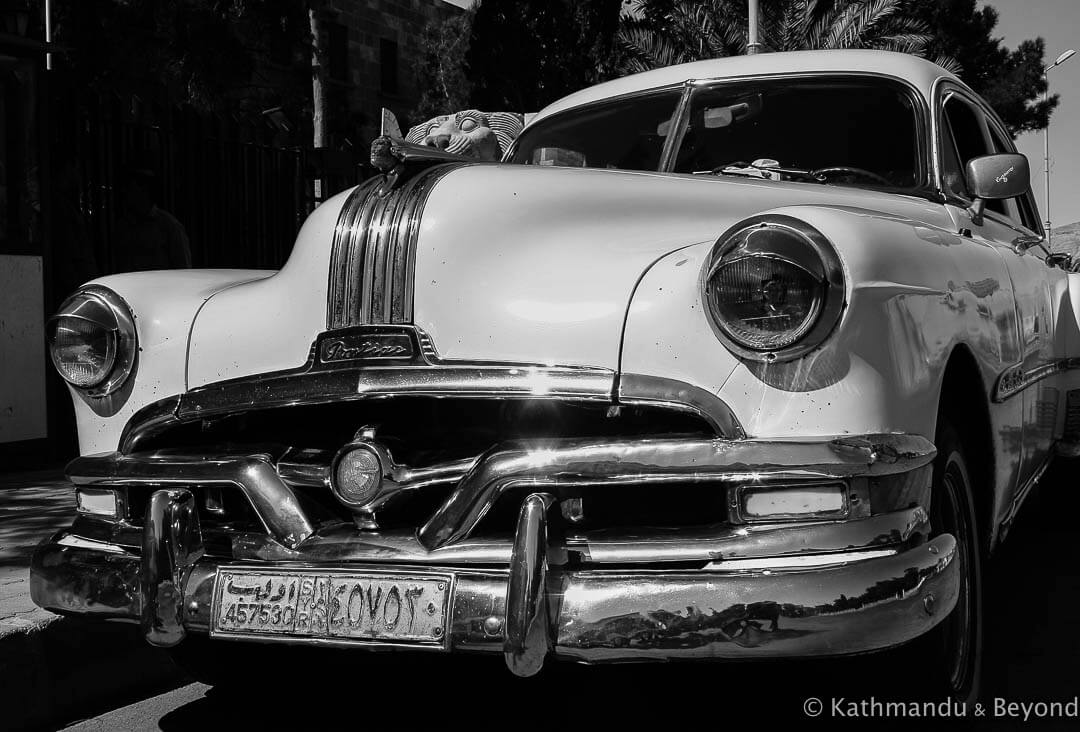 A classic car in Damascus – not the one I was driving around in unfortunately
A classic car in Damascus – not the one I was driving around in unfortunately
He was obviously a bit of a lad. Later on, he offered to take me to the red light district in Damascus for a night out. I declined, of course. I was, after all, working and married!
Over the past five years, I have followed the events in Syria in relation to the devastating civil war and often thought about him and hoped he was OK.
From Krak des Chevaliers we continued north along the country’s main artery, the M5 motorway, to Hama, an ancient (*) city on the Orontes River, noted back then for its norias, or waterwheels. Sadly, these days the city is probably better known for the Siege of Hama, which lasted for a month and a day in July and August 2011.
(*) the word ancient is practically redundant in this part of the world – everything is ancient, so I’m going to stop using it!
I liked Hama but the city wasn’t a patch on my next destination, Aleppo, which I absolutely adored. It was everything a historic city in the Middle East should be – winding alleyways, crowded souks, fragment aromas, a huge citadel and hidden backstreet cafes serving Arabic coffee and fresh dates. I enjoyed my job, especially the travel part of it, but it did frustrate the hell out of me when I visited places such as Aleppo as I always wanted to stay much longer than the short period I was there for.
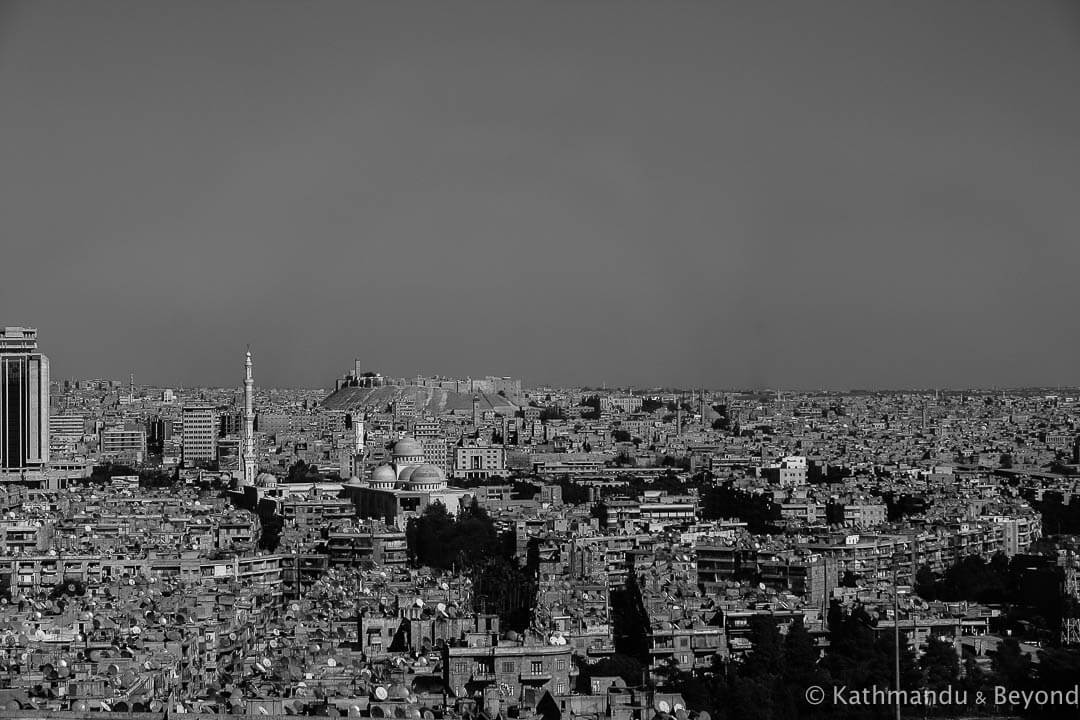 Aleppo
Aleppo
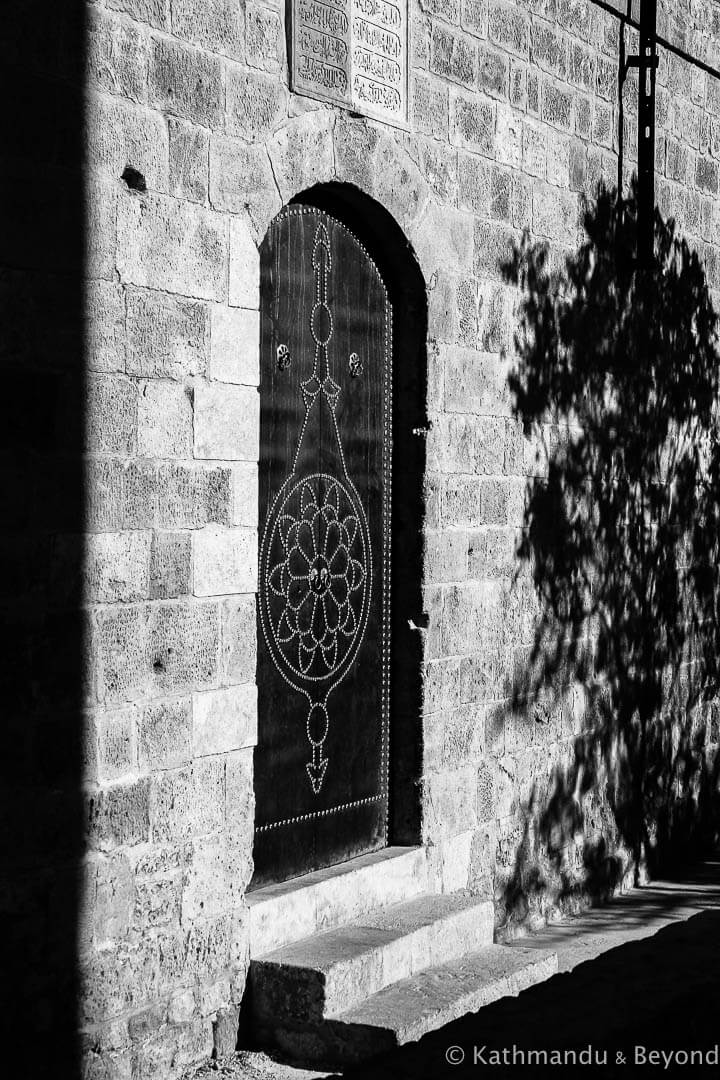
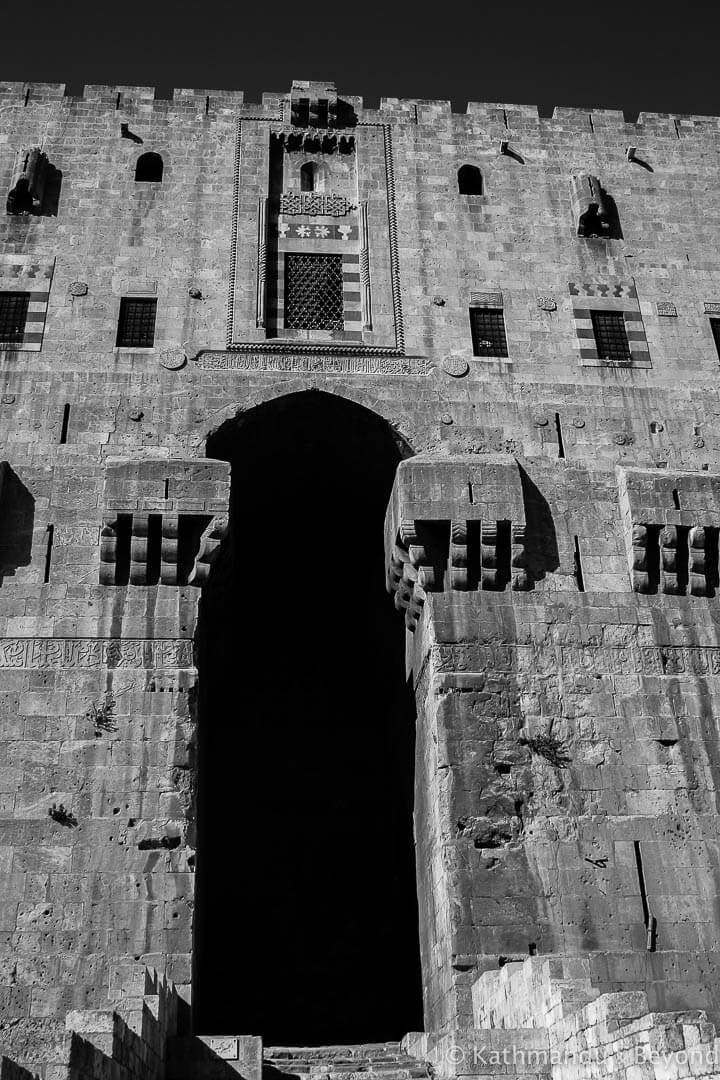
Aleppo
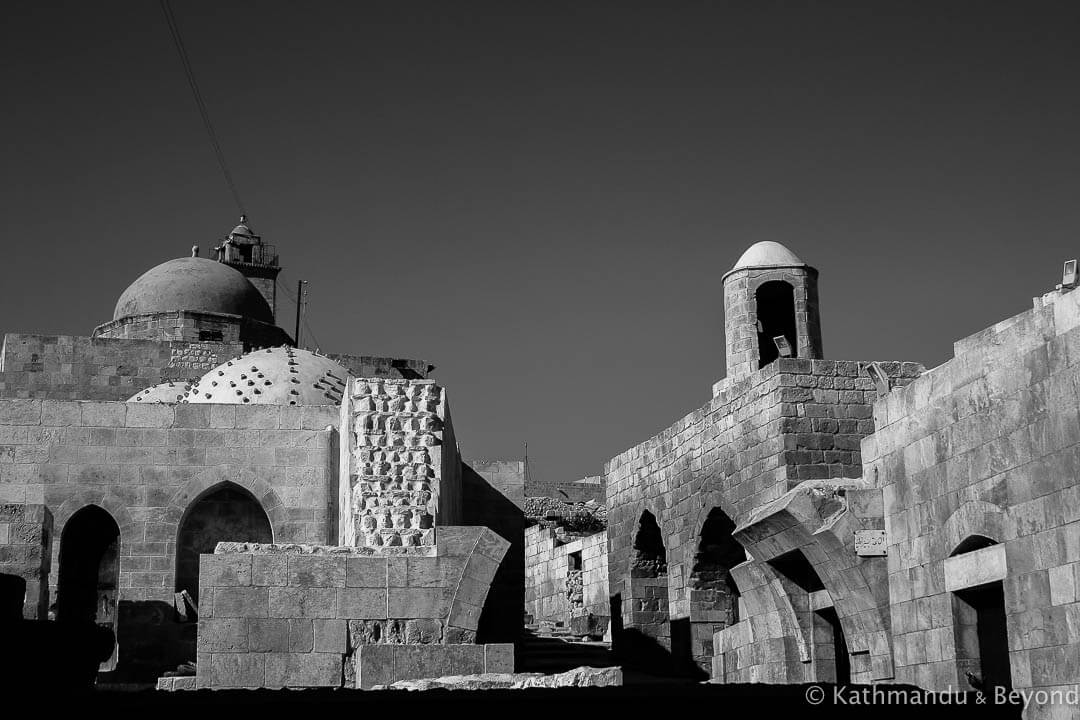 Aleppo
Aleppo
On the way to Aleppo, we detoured off to see the magnificent Great Colonnade at Apamea. You’ll notice other tourists in one of the photos below. I did, in fact, see quite a few tourists during my time in the country but nothing on the scale of nearby Egypt or Jordan, where tourist numbers were positively teeming at the time.
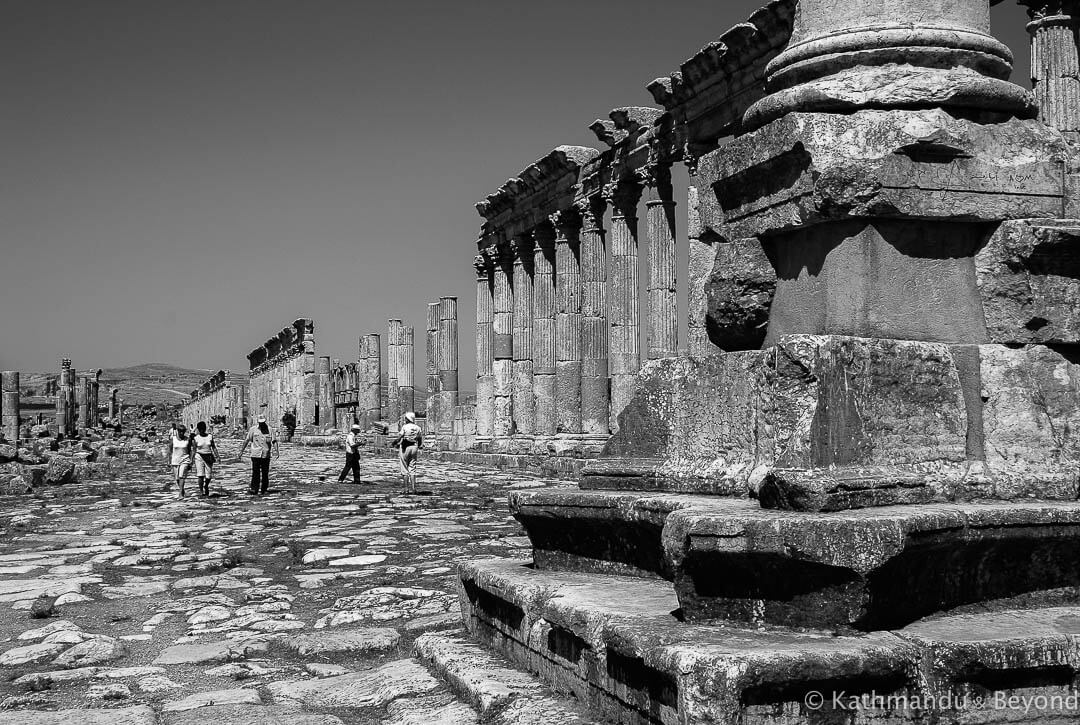 Apamea
Apamea
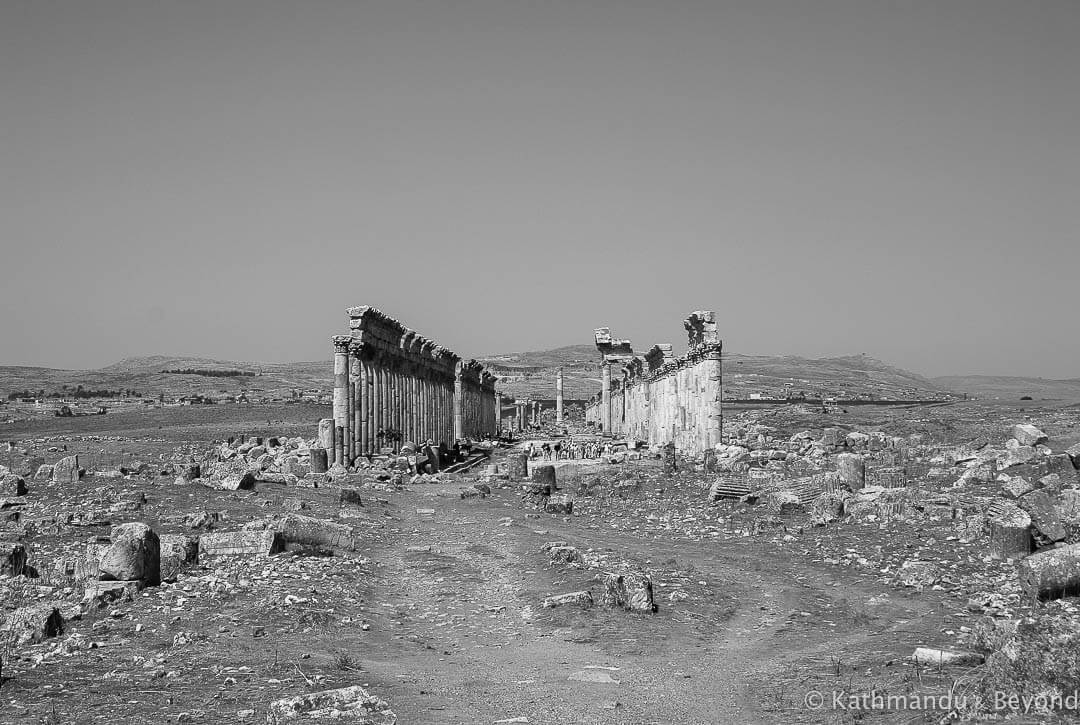 Apamea
Apamea
We also travelled about 30km north of Aleppo towards the Turkish border to see the Cathedral of St. Simeon, also known as Qala’at Semaan (Fortress of Simeon). It was our last stop in the north of the country before driving to what was to be the highlight for me and the place I was looking forward to seeing the most, the Semitic city of Palmyra.
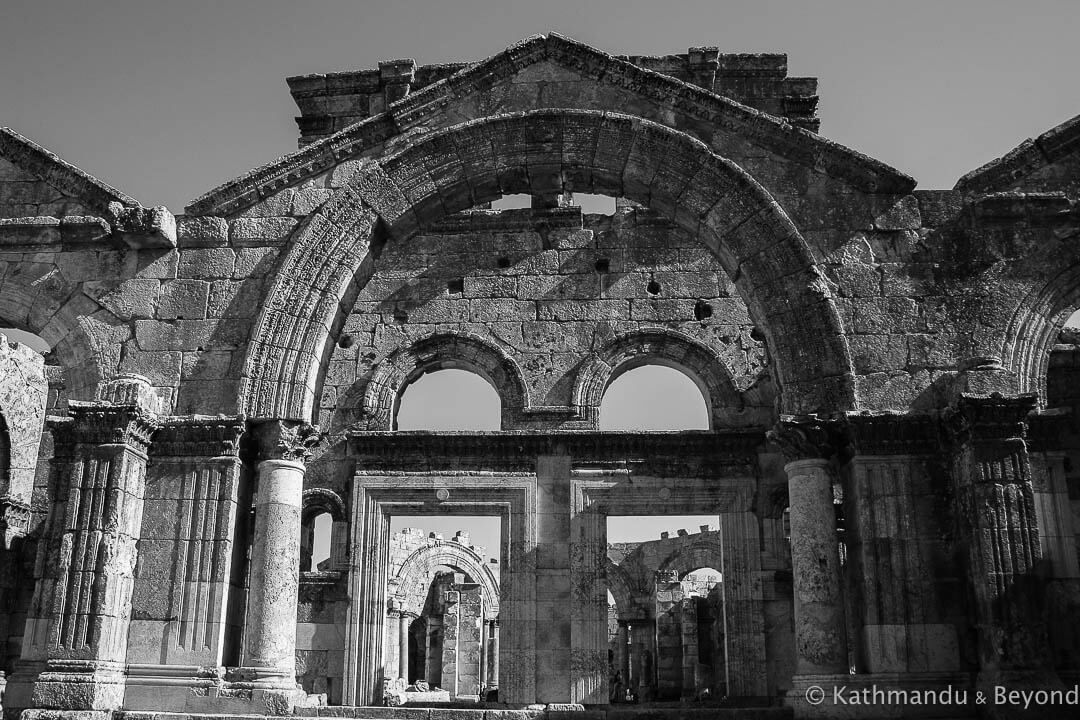 Cathedral of St. Simeon (Qala’at Semaan)
Cathedral of St. Simeon (Qala’at Semaan)
I’d seen a number of the world’s great archaeological cities before visiting Palmyra (Angkor, Machu Picchu, Bagan, Petra etc.) and many more since but I still regard Palmyra to be one of the most spectacular, if not THE most spectacular historical ruins I’ve ever seen. The whole site is encompassed by glorious desert (which turns a stunning blood-orange colour in the late afternoon) and a series of hillocks that provide a perfect vantage point for surveying the ruins in all their glory.
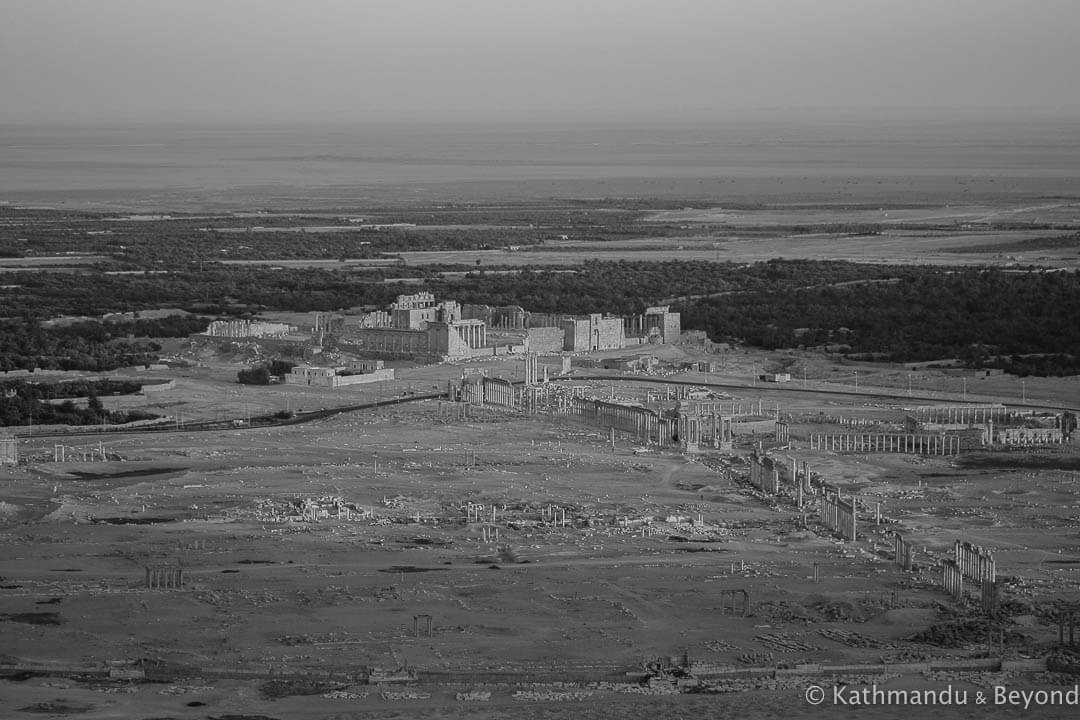 Palmyra
Palmyra
And my visit was enhanced further as I stayed at the Zenobia Hotel, which was situated literally on the edge of the ruins. Evocative of a time when travel was slow and luxurious (circa late 19th, early 20th century), the only source of information was a trusty Baedeker guidebook and travellers went everywhere with a small army of servants. The hotel was in a sorry state even before the war and I think I used the phrase ‘faded grandeur’ to best describe it in my report. It wasn’t right for our clients (who expected a bit more luxury) but I loved it and sat on the edge of the lawn with a cold beer pondering the majestic site before me.
Looking at photos on the Internet, it would appear that the hotel was ransacked and damaged by Islamic State (IS). I hate IS with a passion for the way they have devastated Syria (and other parts of the region), turning it back into the Stone Age and especially for the damage they have done to Palmyra, the true extent of which is still not apparent. A while back Kirsty and I watched a BBC program presented by the eminent art historian, Dan Cruickshank, and my contempt for IS stooped to an all-time low. The documentary was entitled Civilisation Under Attack and showed how truly rotten to the core IS actually is. They, of course, wanted to destroy Palmyra completely but not before taking away anything of value in order to sell it, presumably via the black market? As part of their process to achieve this goal, they tortured Khaled al-Asaad, the retired head of antiquities for Palmyra. Mr al-Asaad gave nothing away and was eventually beheaded. He’s a true hero in my opinion and I hope one day the people responsible for his death are held accountable if they haven’t been already.
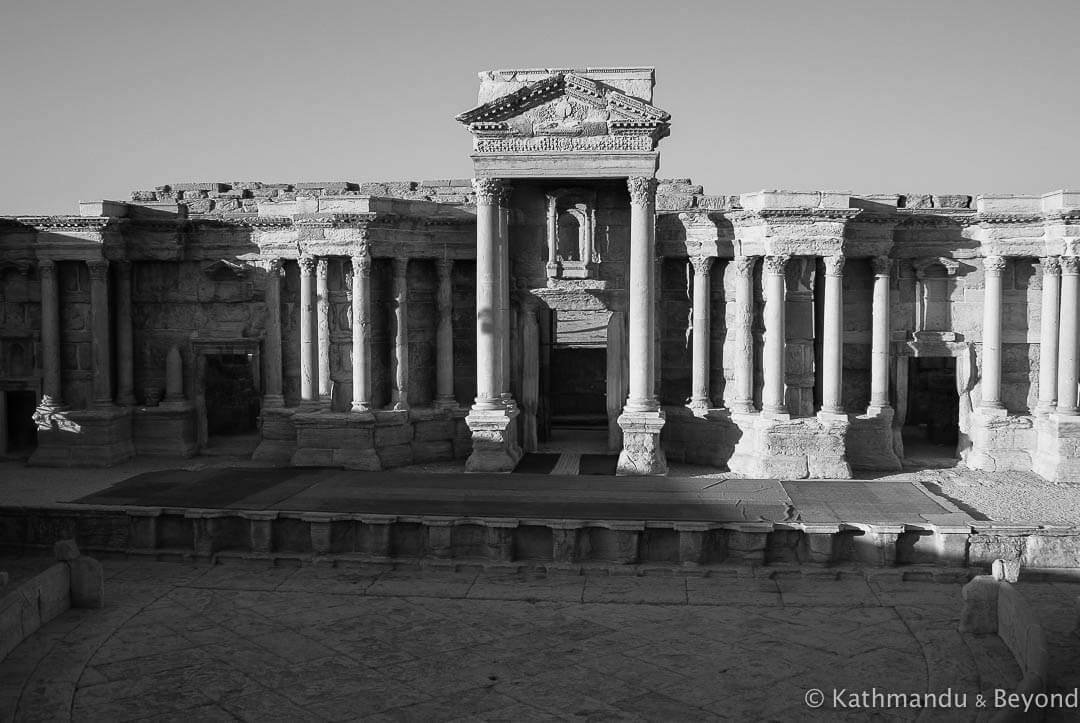 Palmyra
Palmyra
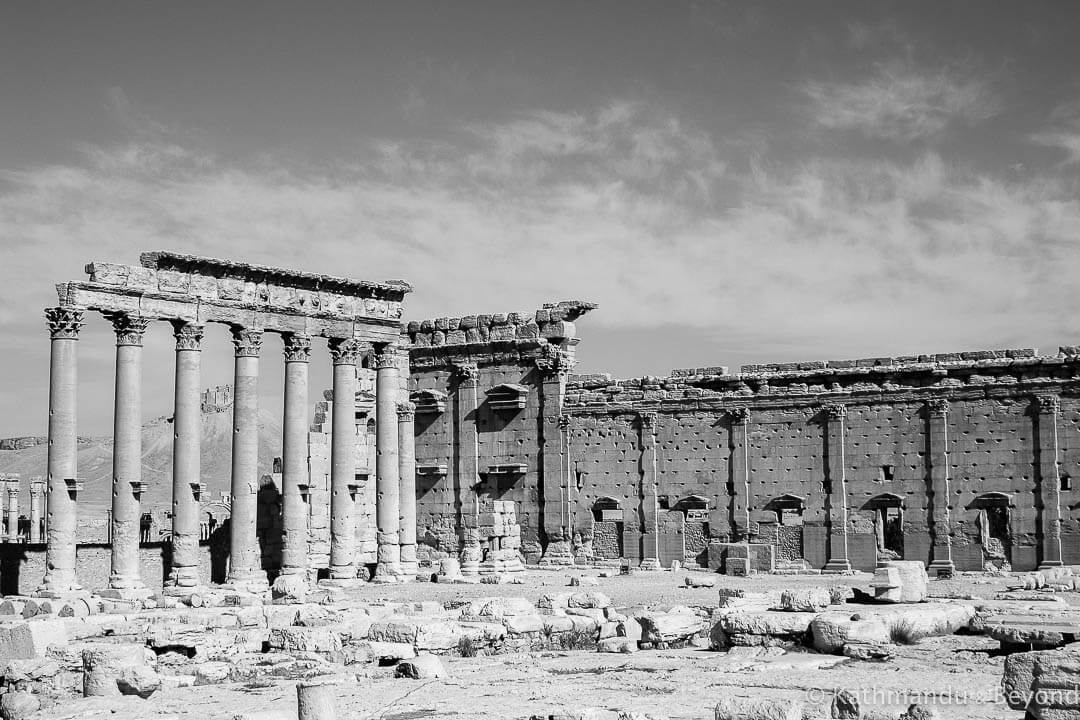 Palmyra
Palmyra
Back on track (sorry for the rant). My last stop in Syria before heading home was the capital, Damascus. I stayed at two hotels in the city and the experience couldn’t have been more different. In the first one (I can’t remember the name of the hotel), I was given a smoking room. I went down to reception and said,
“You’ve put me in a smoking room.”
“Yes, you are allowed to smoke in the room,” the receptionist replied with a smile.
“But I don’t want a smoking room,” I countered. “It smells of smoke.” (Funny that!)
“I see,” he said, and asked me to follow him to the room. Upon arrival, he walked in, opened the window for ventilation and proceeded to leave. I told him it still smelled of smoke. He nodded slowly, walked out of the room and returned with a can of air freshener and proceeded to empty the whole thing into the atmosphere of my room.
“OK now, sir?” he asked, and it’s at this point that I gave up, smiled and said that all was good. Smoking is a serious business in this part of the world!
I then moved to the Four Seasons, which was, well, very Four Seasons and very comfortable indeed! An interesting piece of trivia about the hotel is that it has remained open throughout the duration of the civil war. No doubt, one day, it will go down in history for that exact reason, in the same way the Holiday Inn in Sarajevo has done so (*).
(*) The Holiday Inn in Sarajevo remained operational throughout the entire siege of the city (April 1992 – February 1996) during the Yugoslav Wars and is often written about as a result.
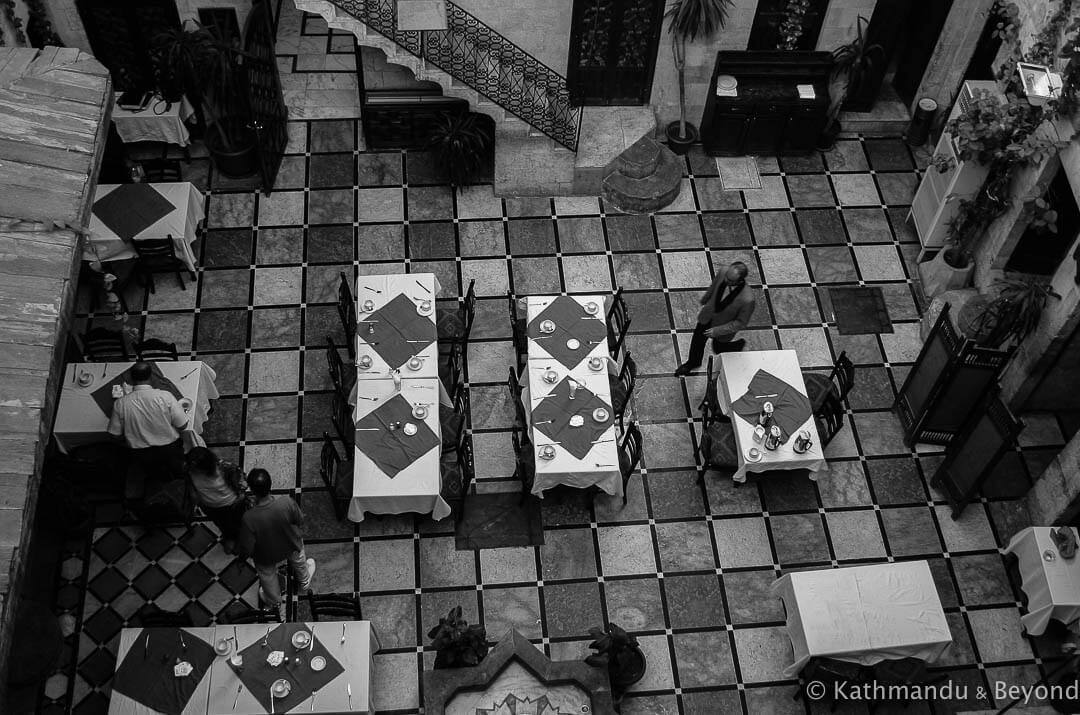 Damascus
Damascus
As for Damascus itself, it was another captivating city that I could easily have spent more time exploring. In fact, that last sentiment is true for all of Syria. I enjoyed the country immensely and thought the sights I saw were world-class. The food was also great. People often think of Lebanon when it comes to cuisine in the region but the delights of Levantine extend to both Syria and Jordan and trust me, the locals know how to treat guests when they come to the dinner table! (*)
(*) A word of advice. If you are invited to dinner in this part of the world, don’t gorge too much on all the enticing starters (mezze) which come out first. Delicious as they may be, that is exactly what they are (appetisers) and before you know it plates of meat, varieties of bread and all sorts of other goodies will soon appear and a) it’s not polite to decline, and b) you will be missing out on even more delectable food!
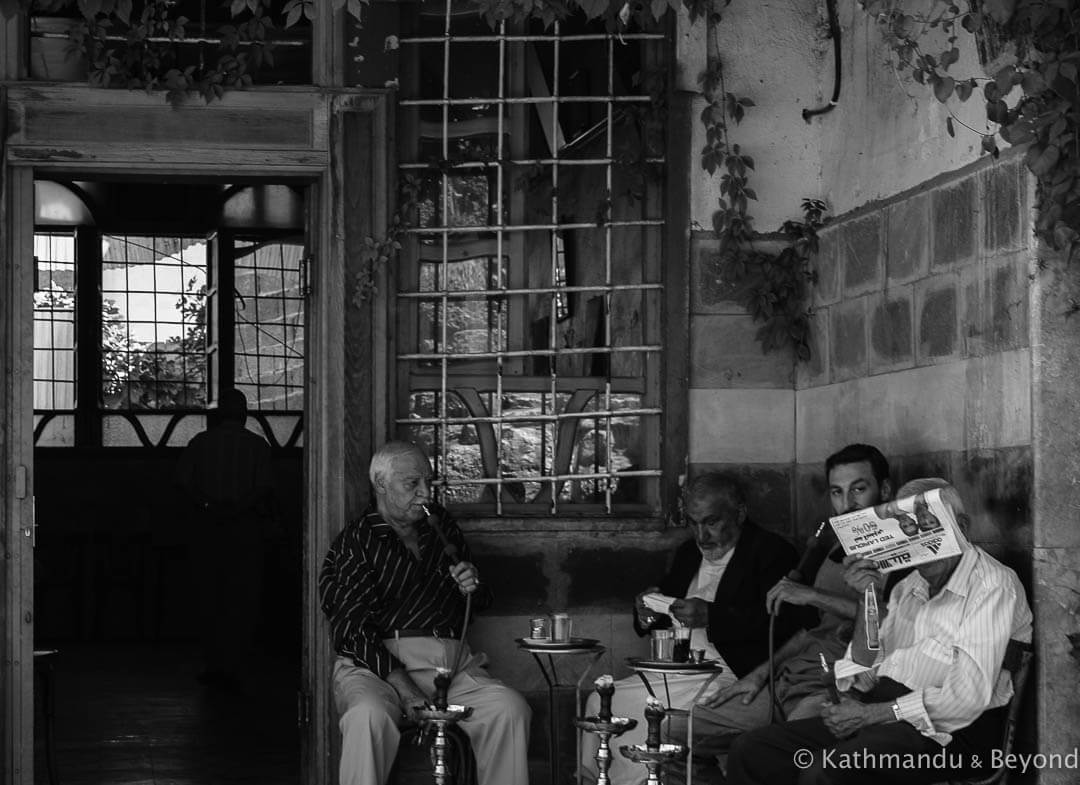 Damascus
Damascus
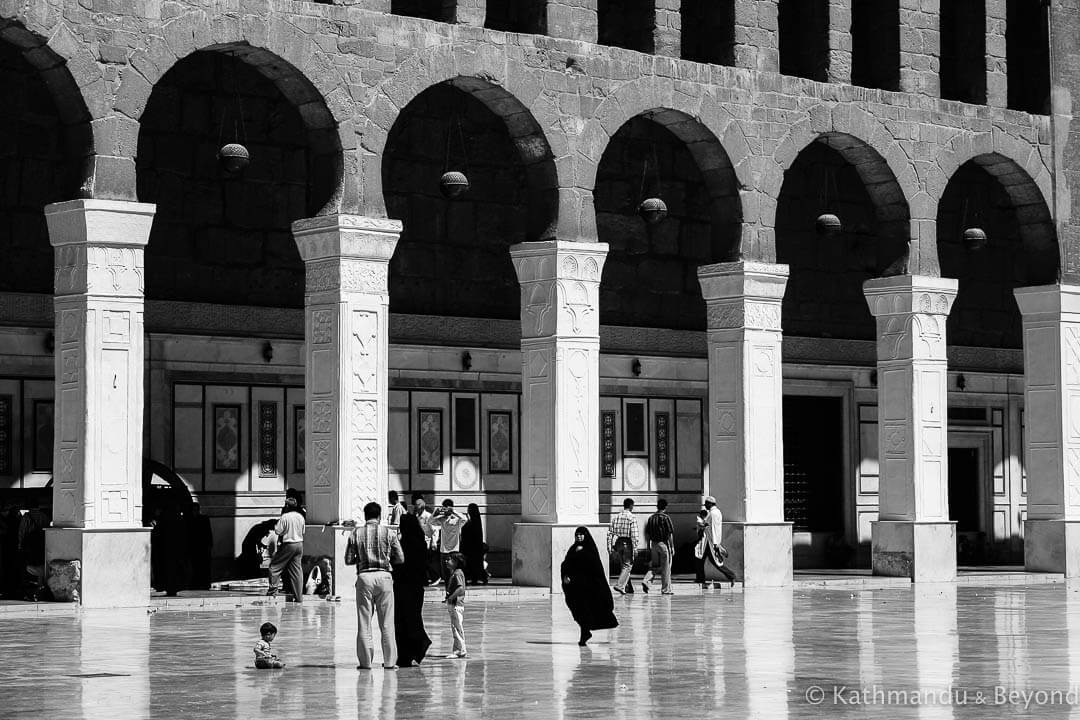 Umayyad Mosque, Damascus
Umayyad Mosque, Damascus
Before leaving the country, I made a quick trip south towards the Jordanian border to see the vast Roman theatre at Bosra and then it was back to the capital in order to catch my flight back to London.
Kirsty and I are considering the Middle East as part of our 2018 plans – Israel, Egypt, Lebanon and Jordan are all on the cards. We may even go further south and venture into Africa. We are undecided as of yet but if there is the opportunity to re-visit/visit (for Kirsty) Syria then we will consider it. I suspect the timing is not yet right and probably won’t be for a while but this incredible country is often in the back of my mind and I would love to return one day.
And why are the photos in black and white?
I don’t know is the honest answer. I was playing around with the originals in Lightroom and decided the quality wasn’t that good and so started processing them in black and white. Eventually, I thought they looked rather interesting that way so I stuck with it. I’ll revert back to colour for my next post!
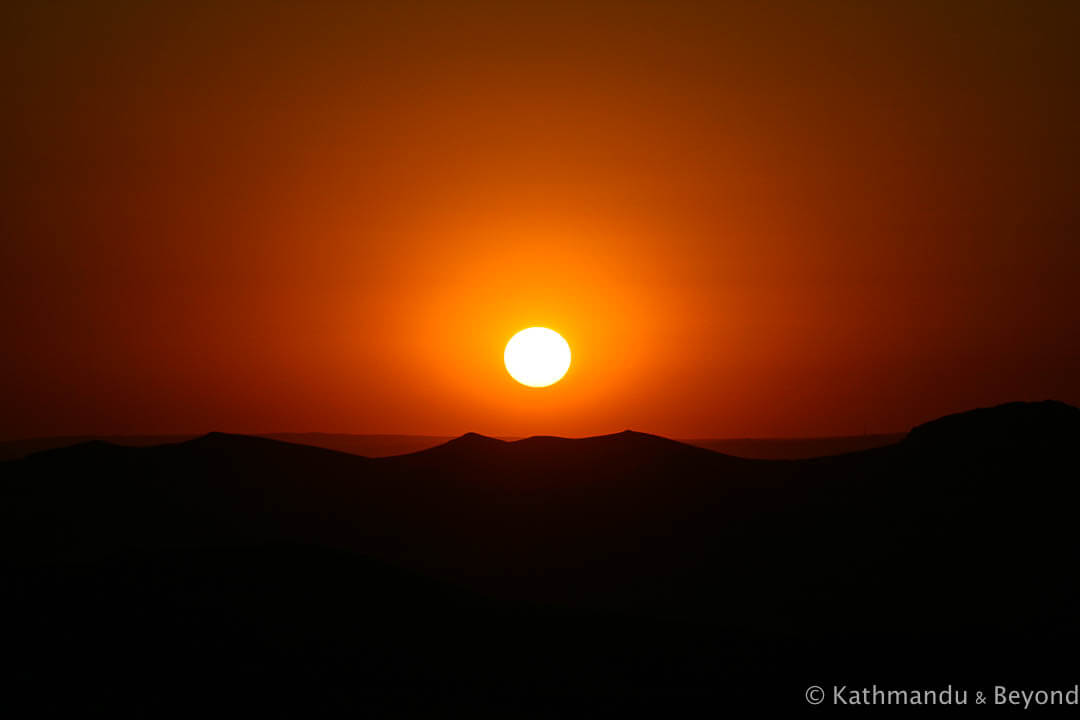 Sunset at Palmyra – in colour!
Sunset at Palmyra – in colour!
READ MORE ‘BACK IN THE DAY’ POSTS

I’ve never been motivated to visit Syria but having read this account of your 2005 visit, I could be tempted if the country ever returns to stability. Your account reveals a fascinating place, full of history and offering something for everyone – ancient archaeological ruins, gorgeous desert sunsets (accompanied by a cold beer), enticing tightly-packed cities, and tantalising cuisine. I particularly liked the humour in your Damascene ninja story and in your attempt to secure a “No Smoking” room at the hotel in Damascus. I agree also with your comments about IS. They have ravaged the country and for what purpose? Your rant is well spoken.
This is an excellent blog and, by the way, the black-and-white photos set it off perfectly. Well done.
Thank you! If we get the chance to go to Syria, I’ll be sure to let you know incase you want to tag along!!
If you ever make it back, other great places are Dora Europus and the Byzantine fortress of Halabiye on the Euphrates, the ruins of the Roman city of Sergiopolis (now called Rasafa, I think), just south of Raqqa, and three other Crusader castles north of Krak — Castel Blanc, which is not so interesting, but Margat and Saone, which are very interesting, especially Saone.. Also, when I was there, albeit a long time ago (1995), there was a hostel inside the Roman amphitheatre turned castle in Bosra, a great place to stay and wander around at night.
Dora Europus has long been on my list but I wasn’t aware of the Sergiopolis – I am now and it looks incredible. I would like very much to revisit one day and Kirsty is keen to get there for the first time. We are keeping an eye on the situation!
Amazing photos! It’s tragic what’s happening there and like you, I dread to think what’s left of Syria’s historical monuments. I really hope I get to travel there before too much time passes…
Thanks you. Mark’s so lucky to have been twice. One of my biggest travel regrets is not having travelled there yet…
Great photos! I’d love to visit Syria one day…
Hope you get there soon!